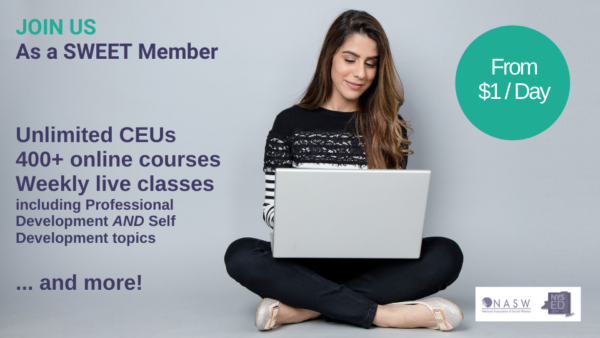The “I Love Myself” Exercise
The “I Love Myself” Exercise is a neuroscience, cognitive, and behavioral, based, technique, that can be used as an adjunctive tool with any type of psychosocial or psychotropic treatments or interventions.
Rationale for the technique:
-
Thousands of studies in neuroscience, cognitive, and behavioral, science, reliably reveal a close link between our belief systems, our perception, our feelings, and our behaviors.
-
Our beliefs about ourselves, hugely determine how we feel, how we behave, and how we perform. They also determine the types of relationships we get involved in, how we are treated at work, and whether we get promoted or not, whether we take any initiative or not; and how we treat others.
-
Any intervention that does not address these types of beliefs will likely limit the effectiveness of other types of interventions, however effective.
-
The “I Love Myself” Exercise is a tool that we can perform at any time, anywhere, with expected results
Indication: The “I Love Myself” Exercise can be tailored based on the individual and/or on a specific symptom, and/or condition, including reports of feeling empty, stuck, “not enough,” etc.
Benefits:
Increase In:
-
Self-love

-
Self-image
-
Self-esteem
-
Self-confidence/self-efficacy
Risks: This exercise may bring up some suppressed or repressed emotions, which can then be expressed in the form of:
-
Tearfulness
-
Transient discomfort
It is therefore recommended that those with a mental health condition perform this exercise for the first time in the presence of their clinicians.
Steps:
-
I say “I love myself,” at least ten times, successively.
-
I do, at least, one round of ten in the morning, one round in the afternoon, and one round at bedtime.
-
As I do that, I pay attention to how I am feeling, by paying attention to some parts of my body, for example.
-
In addition to a minimum of three times a day, I also practice this exercise throughout the day as often as possible.
Recommendations:
When performed for the first time, other possible responses may be, “it feels silly,” “It feels awkward,” “It feels childish.” These are normal defensive-based responses. As such, the individual is to continue with the exercise.
How to Introduce the “I Love Myself” Exercise:
There are several ways and the following is only one of them. C=Clinician; Ind=Individual
C: Loving oneself is something that some pay attention to while others do not. Now, I have a question regarding just that, please tell me the last time you said you love yourself.
Ind: I don’t know/It’s been a long time/I don’t remember when/I never have/This sounds weird-I didn’t know I had to say, “I love myself.”
C: Tell me what would happen if you were to say, “I love myself” to yourself.
Ind: Oh, I don’t know/That would sound weird/who knows
C: Please tell me what it would take for you to say you love yourself?
Ind: Well, I can try to say that, “I love myself.”
C: Wonderful, now one more time….
Ind: I love myself.
C: Perfect, how about saying it three times, in a row
Ind: I love myself. I love myself. I love myself.
C: Tell me how it would feel like if you said it three times, like you just did, then wait for three seconds again before you repeated the cycle.
Ind: Sure. That’s fine. I can do that.
C: Great. Thank you. Now tell me how everything feels so far.
Ind: It’s fine, I guess.
C: Tell me what it would feel like if you were to do this in front of a mirror, looking yourself in the eyes, starting with your name, pausing for 3 seconds, and then saying, “I love you,” pausing again for 3 seconds, and then restart the cycle up to three times?
Ind: Well, I can try
C: Perfect. Thank you for that. Now, tell me how often you’d like to do this during the day
Ind: I don’t know. How often should I do that?
C: Great question, Karen. For the best possible answer for you, let’s take a deeper look at the situation. Tell me which parts of the day would you most likely like to do that?
Ind: Well, perhaps, in the morning, when I am getting ready for work. I think that might be a good time. Who knows.
C: Perfect. I think so too. So, you’d be able to start doing that in the morning while getting ready for work. Tell me what other parts during the day.
Ind: Well, perhaps before I go to bed. I think I can do that.
C: That sounds optimal, Karen. For now, in the morning, while getting ready for work and at night before going to bed, may sound ideal. Great. Now, tell me what other times during the day would you be able to do that.
Ind: Well, it does not really take that long. Can I do it during lunchtime, or when commuting to work, and as often as I remember?
C: Absolutely, Karen. In fact, in addition to doing these types of exercises three times a day, doing them as often as possible during the rest of the day has been the best way to go about that.
C: Now, tell me what possible barriers do you anticipate that may get in your way to doing this in the morning, at night before going to bed, and during the day at lunch and commuting?
Ind: Well, I am going to do it, as I said, and I’ll take it from there
C: That sounds perfect, Karen. Looking forward to hearing about it all next week. Please let me know what questions you have for me before you leave.
Ind: Nope, I’m good. Thanks so much. And see you next week.
C: See you next week.
Notes:
-
Karen was not introduced to all the steps. This is in the spirit of meeting her where she was at, ensuring she would be not overwhelmed, and taking things one step at a time with her
-
Karen was not told, “Hey, this is the best technique for you. Go and do this. Here’s how it works. Just do it and report next week.” We now know this approach precludes adherence and success when working with individuals
-
When Karen returns the following week, we will see how things went with her, and then use the same approach to introduce her to the next step of the exercise. Re: Adding something after saying, “I love myself.” For example: “I love myself and I love my work.”
-
Clinician will find different possible responses and challenges from different individuals. We will be going over how to best address each one of them in subsequent articles.
The SWEET Institute is determined to change how patients and clients are cared for, to change how continuing education/CEU is being conducted, and to be the place for all clinicians.
If you stand for any one of the above, we invite you to join us and help heal the world through an increase in awareness, through a shift in belief systems, and through a different type of education-one that empowers us all and leads us to fulfillment and self-actualization.
We look forward to welcoming, working with, and serving, you.
With love,
Karen and Mardoche









